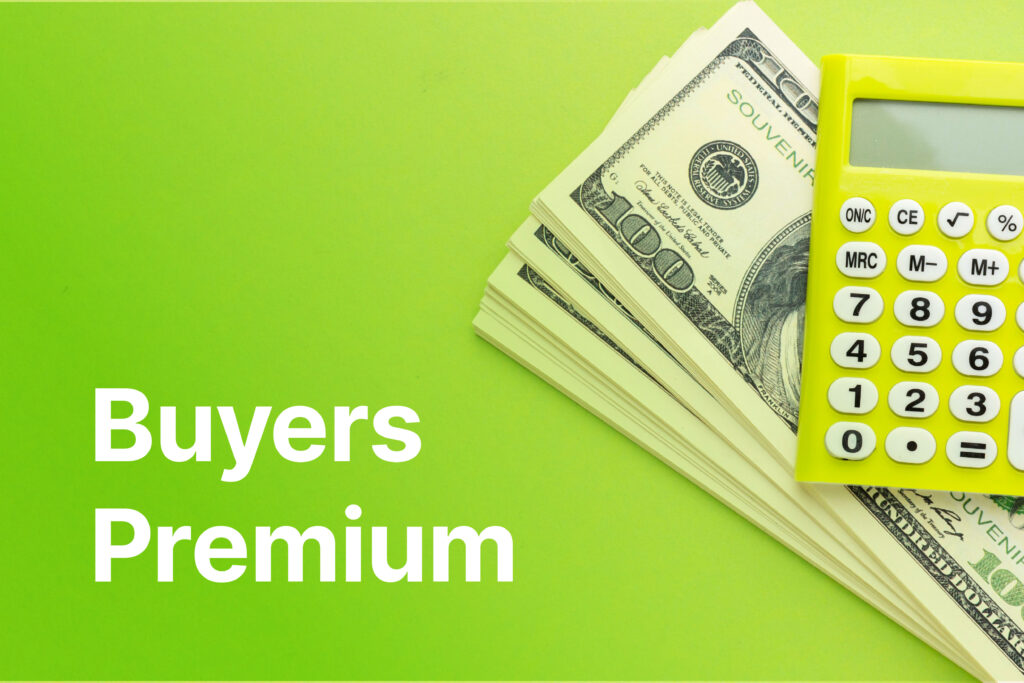If you’re an auctioneer or manage an auction house, you’ve likely encountered the term “buyer’s premium.” It’s a widely used fee in the auction industry, but understanding its role, advantages, and implications is essential for running a successful auction.
What is a Buyer’s Premium?
A buyer’s premium is an additional fee charged to the winning bidder on top of the hammer price (the final bid amount). This fee, typically expressed as a percentage of the hammer price, is paid directly to the auction house to cover operational costs and enhance profitability. For instance, if an auction house charges a 10% buyer’s premium and the hammer price of an item is $1,000, the winning bidder would pay $1,100 in total.
Pros and Cons of Implementing a Buyer’s Premium
Pros
- Increased Revenue: The buyer’s premium provides an additional revenue stream for the auction house, allowing for lower seller commissions and making the business more sustainable.
- Lower Risk for Sellers: Sellers may feel more comfortable consigning valuable items when auction houses can lower seller fees, offsetting costs through the buyer’s premium.
- Operational Support: This fee helps auction houses cover administrative costs, marketing efforts, and staff salaries, ensuring smoother operations.
- Flexibility in Attracting Consignors: With revenue supplemented by the buyer’s premium, auction houses can offer more competitive seller terms to attract high-value consignments.
Cons
- Deterrent to Bidders: Some bidders may find the additional cost discouraging, especially new buyers unfamiliar with auction practices.
- Transparency Issues: If not clearly communicated, buyers may feel misled by the extra charge, damaging trust and customer relationships.
- Impact on Final Prices: A buyer’s premium can lower bidding activity as buyers factor the fee into their total cost, potentially reducing hammer prices.
- Competitive Disadvantage: Competing auction houses without a buyer’s premium may attract bidders looking for simpler and lower-cost transactions.
When Should an Auction House Consider a Buyer’s Premium?
Deciding whether to implement a buyer’s premium depends on your business model, audience, and operational needs. Here are some factors to consider:
- Auction Scale: Larger auction houses with significant overhead may benefit more from implementing a buyer’s premium than smaller, niche operations.
- Bidder Demographics: Experienced buyers may be accustomed to the buyer’s premium, while casual or first-time bidders might be discouraged by it.
- Competitor Practices: Research whether other auction houses in your market charge a buyer’s premium and how bidders have responded.
- Transparency and Communication: If you decide to implement a buyer’s premium, be upfront and clear in your auction terms and conditions to maintain trust with bidders.
How a Buyer’s Premium Impacts AuctionWriter Usage
If your auction house uses AuctionWriter for cataloging and estimating, the buyer’s premium introduces additional considerations:
- Evaluating Estimates: When AuctionWriter generates an estimated value for an item, factor in how the buyer’s premium might affect the final bidder amount. For instance, if an item’s estimated value is $1,000, you might need to clarify whether this includes the buyer’s premium or represents the hammer price only.
- Transparency with Bidders: Use AuctionWriter’s generated descriptions to educate bidders about the buyer’s premium. A note in the description or terms can help manage expectations.
- Marketing Strategies: AuctionWriter’s polished catalog descriptions can highlight the value of items, ensuring that the buyer’s premium doesn’t overshadow the perceived worth of the lots.
- Consignor Communication: AuctionWriter’s ability to produce clear, accurate descriptions can help you demonstrate to consignors how their items are presented to maximize bidder interest, even with the buyer’s premium in place.
Final Thoughts
The buyer’s premium is a common practice in the auction world, offering significant advantages but requiring careful consideration to implement effectively. For auctioneers, tools like AuctionWriter can streamline catalog creation while addressing the complexities of communicating fees like a buyer’s premium to bidders.
By evaluating your business needs, audience, and market dynamics, you can determine whether a buyer’s premium aligns with your goals. If you choose to adopt one, clear communication and effective cataloging will be essential for maintaining bidder trust and maximizing auction success.
Checkout our glossary of Auction Terms Every Online Auctioneer and Auction House Should Know to discover more key terms and phrases in the modern auction industry.
